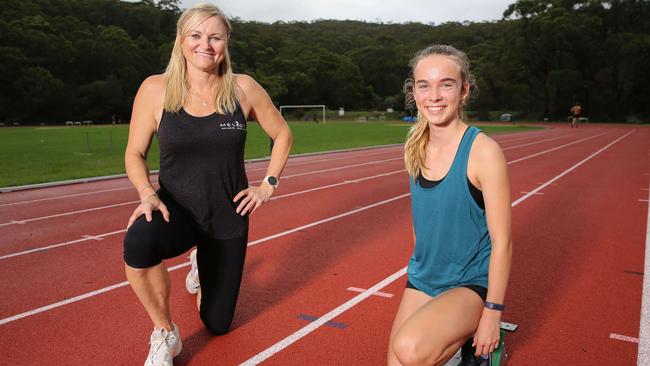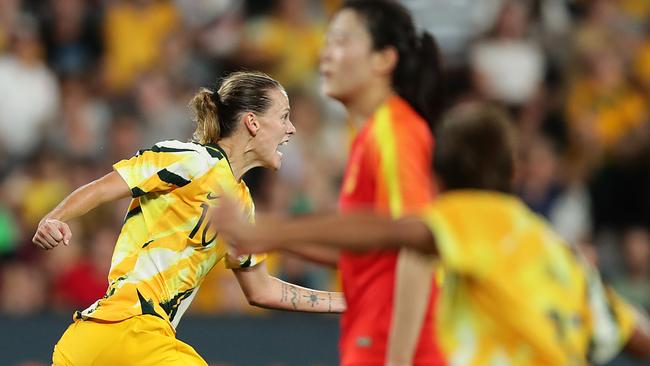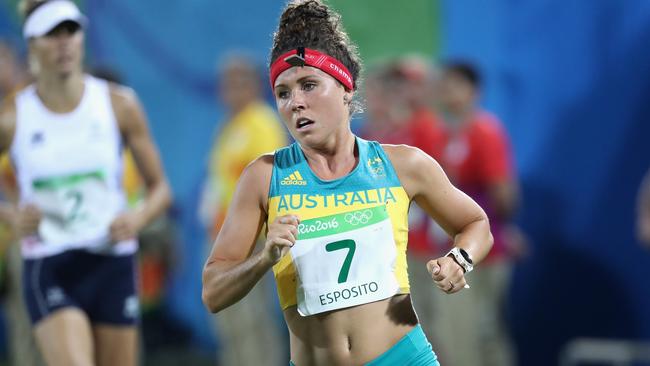Aussie Olympic sports face big funding cuts after Tokyo while sport executives enjoy lavish salaries
Australian Olympic sports are facing a financial crisis, with some organisations losing their entire elite program after Tokyo, but it doesn’t seem to be putting the brakes on excessive spending.
Olympics
Don't miss out on the headlines from Olympics. Followed categories will be added to My News.
Olympic sports face big funding cuts — some more than 60 per cent — after the Tokyo Olympics, while sports executives enjoy lavish salaries and perks, an investigation by The Australian shows.
Some national sports organisations face losing their entire elite program, while others fear they will not have the money to hire coaches, as the Australian Institute of Sport focuses its funding on proven medal-winning sports.
The biggest losers will be Australian youth aged between 13 and 16, who would be eyeing a shot at the 2024 Olympic Games in Paris.
Stream over 50 sports Live & On-Demand with KAYO SPORTS on your TV, computer, mobile or tablet. Just $25/month, no lock-in contract. Get your 14-day free trial and start streaming instantly >

Those athletes will be further dismayed to discover that while many middle- and low-ranking sports are cash-poor, the top AIS executive, Peter Conde, is paid $425,000 and he and three other deputies, all on big salaries, fly in and out of Canberra from expensive offices leased in Collins Street, Melbourne, and in Brisbane.
One deputy, Ian Burns, who heads the innovation section, is even based in San Francisco for much of the time.
In addition, The Australian can reveal that the Australian Sports Commission spent about $5m on executive recruitment firms in 2018 and 2019 — an insider attributing the high figure not just to finding the right candidates for roles, but paying short term staff to fill gaps.
The commission also spent $7.72m on leadership training over three years.
One sport leader said that they were “knocked back” when they asked to be involved in the Melbourne Business School leadership sport program, yet swimming officials were allowed to take part.
“The government should use the sports rorts affair and the obvious mismanagement around consultancy to completely clean out senior management and restructure the organisation so it can focus on its core duties,” one senior sports administrator said.
“That is clearly not happening now.”

Champion sprinter, Olympian and now athletics coach Melinda Gainsford-Taylor, whose sport is not currently in peril, said it was essential for the government to up the investment for aspiring Olympians.
“It’s so important to support athletes to go to the next level like the Olympics, it’s not just about winning a medal,” Gainsford-Taylor said.
“It’s about creating role models for our kids and keeping fit and healthy while they chase their dreams.
“Where I see it is really difficult for the young ones these days is that they are getting no support with physio, sports doctors, the gym and so on.
“You need the money to train harder and full-time. If you don’t get it, then how do you become a top-eight in the world? How do you become a medallist? In the end, athletes often have to give up and go to work. I see a whole lot of athletes who could go to the next level but they just need the support like say money to help them travel to meets. I understand we need funding for things like medical research — my mum passed away from cancer — but I still believe funding for sport is crucial.”
The eye-watering executive spending has happened while some Olympic sports have been refused basic funds to help their Tokyo campaign.
The national baseball team, ranked No 6 in the world, has been told it will not get any money for an upcoming Olympic qualifying camp because it is not considered good enough to win an Olympic medal.

The team’s high-performance funding allocation was $775,000 for 2019-20.
Olympic sports have been told future funding will be based on forecast Olympic medals and potential athletes, so well-resourced sports such as cycling, athletics, swimming and rowing will get even more money at the expense of smaller sports, which often produce a surprise medallist, such as modern pentathlete Chloe Esposito at Rio in 2016.
Other sports under the gun are volleyball, which had $2,692,022 in high-performance money allocated for 2019-20, gymnastics ($2,536,322) and water polo ($3,791,927).
The Australian has also discovered that the AIS has privately targeted 35 medals at July’s Tokyo Olympics, 10 of them gold, and would like the medals to be spread across 12 sports.
That’s almost half of the Olympic medals won at the 2000 Sydney Olympics, a time when the AIS was a world-leading centralised institution and at its most effective.
Curiously, the AIS target is also below the predictions of Gracenote, a research firm the AIS contracts for its medal predictions, perhaps ensuring executive performances are met.
Gracenote says Australia could win 17 gold medals and 44 in total, just ahead of Britain and The Netherlands.
